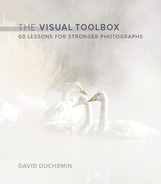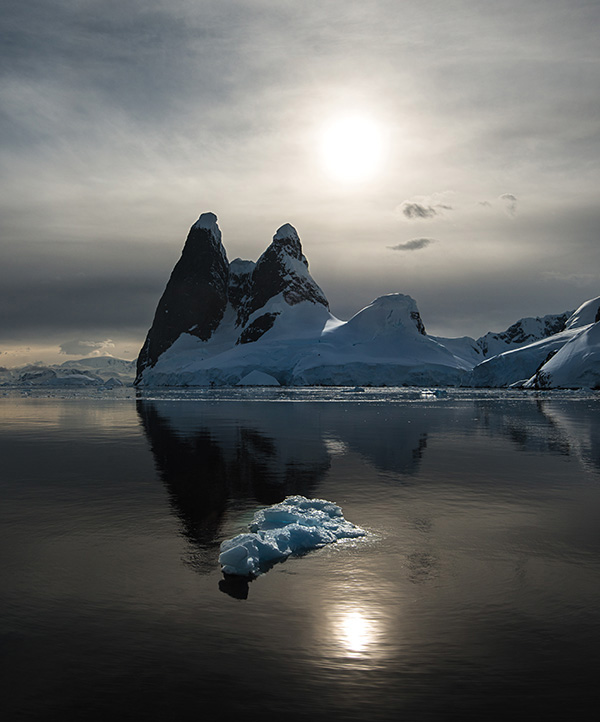Lesson 32. Light: Reflections
The next four lessons are less about how we accomplish one particular effect or the other; they are better considered as exercises in awareness. Because we see the world three dimensionally (until the camera flattens a scene), and because we take these effects for granted, we sometimes neglect to truly see them. In so doing, we miss an opportunity to incorporate them into our compositions, realizing too late that, for example, we were looking at the subject so intently that we didn’t notice his shadow, and so we cut it off prematurely so that the lines in the image now don’t resolve as powerfully as they could have if they hadn’t been cut off by the frame.
If you spend any time photographing near shiny surfaces like glass, water, or wet pavement, you’ll run into reflections. With any luck you’ll learn to recognize them, incorporate them into your photographs, and seek out the conditions that make them happen. In Venice I recently spent an evening chasing reflections in a flooded Piazza San Marco and the glass storefronts of the shops and bistros that surround the square. Playing with my position relative to the windows allowed me to photograph the dual worlds of Venice and her reflection, creating some beautiful symmetry and mood. You’ll find the same in places with still water. During my last trip to Antarctica, when I made the images that accompany this lesson, I had a lot of opportunities to play with reflections of land and cloud elements in the water, creating a kind of rhythm and symmetry that’s not often possible otherwise.
There is no magic in photographing reflections. The hardest part is just paying attention to them—learning to really see them—and then treating them as you would other lines and shapes, and making conscious choices about them. Among those choices are how much to include or exclude, seeing beyond the reflection into the surface of the reflective thing itself (it’s easy to shoot a reflection in a shop window only to see later that you can also see into the shop, which can either help or hinder the image, but you have to be aware of it), and playing with different reflective surfaces, all of which will give you different effects. Spend some time playing with reflections and you’ll be more aware of them when they present themselves, and more able to control them when they’re part of the scene.


